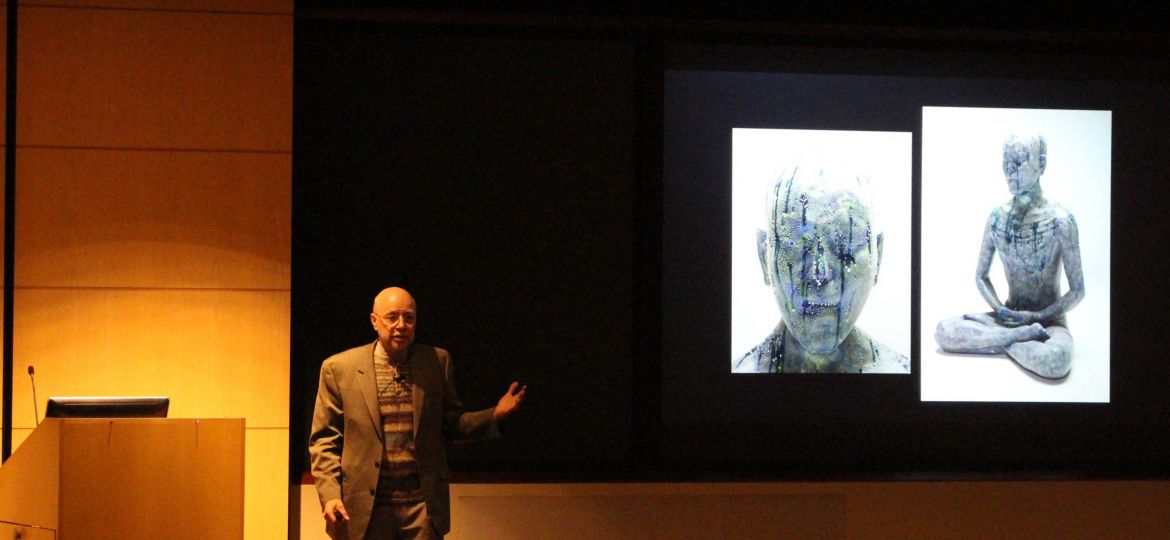
The historic acquisition of ceramic materials from foreign places has created a lapse within artistic sustainability, Ceramic Artist Richard Bresnahan said during his lecture on Friday, Nov. 9. The Flaten Art Museum is showcasing Bresnahan’s art right now and his lecture was an effort to bring attention to the value of art sustainability, particularly in the field of ceramics.
Bresnahan founded the first wood-burning pottery kiln at St. John’s University in 1979 after studying the history and significance of ceramics in Japan. While there, he learned about the harm imported materials often cause in their countries of origin – this included the oftentimes poor working conditions of those who mass produce pottery for European consumers.
“We’re looking at a dialogue between our time on earth and what’s going on around us.” – Richard Bresnahan
Bresnahan also spoke about how cobalt blue glaze was only made available due to the work of enslaved peoples. Additionally, Bresnahan said many workers would die around the age of 32 due to the constant inhalation of silicon while blowing glaze onto the baked clay. In the case an “unsatisfactory,” finished product, Bresnahan said those pieces would be discarded and broken, left in a pile of other rejected works of art. These practices were, and are, perpetuated by nations continuing to import ceramic materials from other countries. This is what Bresnahan is trying to change with his studio at St. John’s, where all materials are sustainably sourced from local land.
In order to implement his environmentally minded arts initiative Bresnahan needed a team of people willing to dive in.
“I’m not a singular artist,” Bresnahan said. “I need a community, or I cannot make my work.”
Together, Bresnahan and his team committed to equipping their kiln with Minnesotan materials. With a generous grant from St. John’s, they dug clay from the soil of northern Minnesota and gathered flax seed from Bresnahan’s home state of North Dakota. When burned, this flax creates a light turquoise glaze. Through these methods and others, Bresnahan is hoping to change the way ceramic are produced.
This pottery pioneer isn’t only interested in art. He is also passionate about environmental activism and recognizes such activism comes largely from young people.
“Dialogue has to come from young minds who are willing to take risks,” Bresnahan said.
Bresnahan and his team of creators are committed to making ceramics that come from and physically resemble the nature that surrounds them. The pottery displayed in the Flaten Art Museum is an example of the natural design his works portray.
The sustainable and ethical practices Bresnahan champions can be translated into every aspect of art and resource acquisition. Knowing which materials are eco-mutually sourced is an important part of practicing both environmentalism and social justice in the arts.
“We’re not making art anymore,” Bresnahan said at the end of his lecture. “We’re looking at a dialogue between our time on earth and what’s going on around us.”









